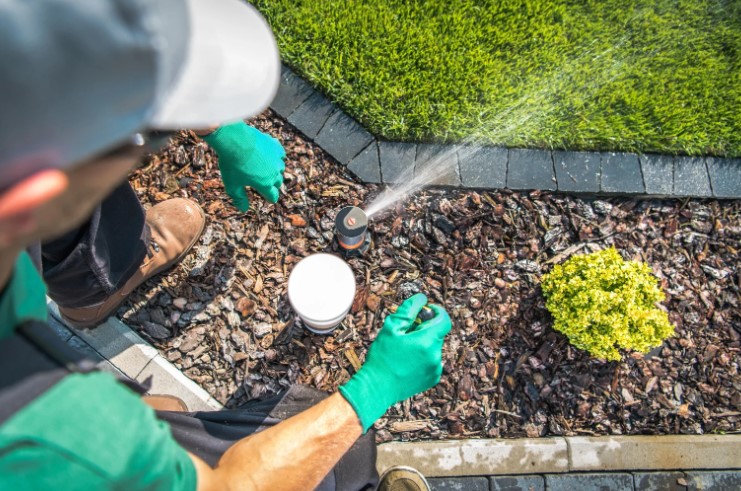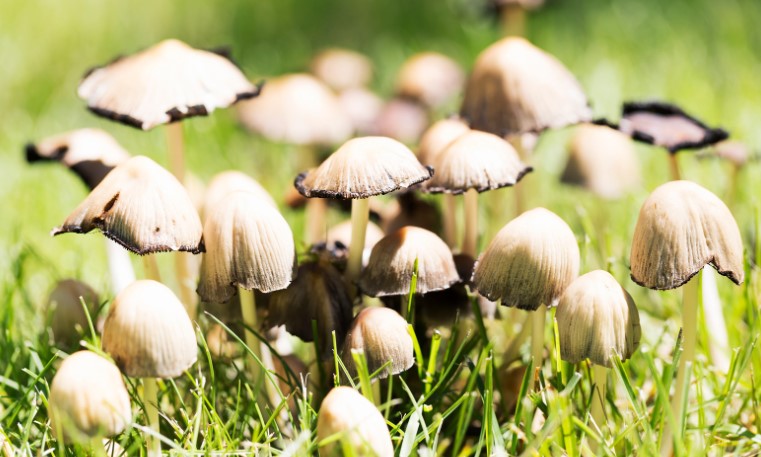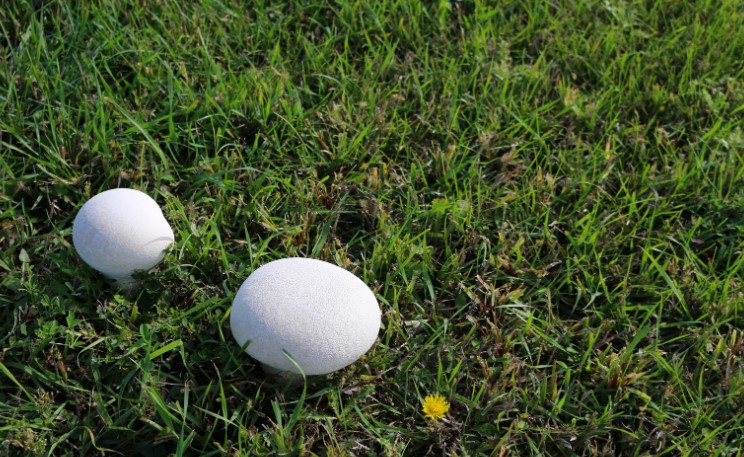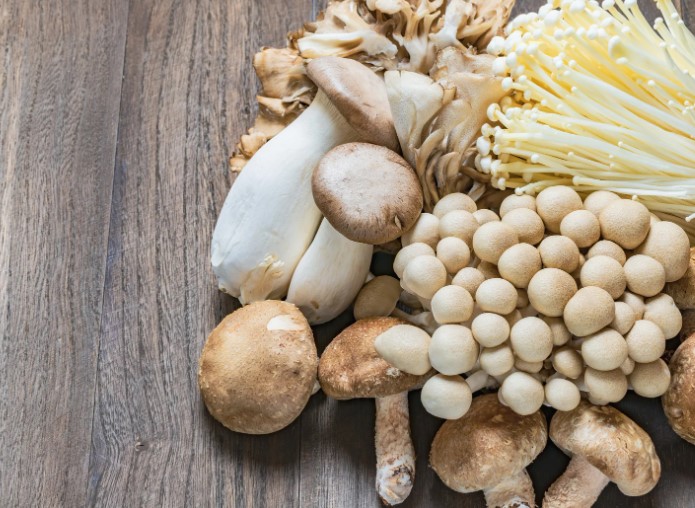Mushrooms popping up in your lawn can be frustrating, especially when you’re trying to maintain a healthy, green garden. While mushrooms are a natural part of the ecosystem, they can sometimes indicate underlying lawn issues.
Fortunately, there are safe and effective ways on how do you kill mushrooms without killing grass. In this guide, I’ll explain why mushrooms grow in your lawn, how to remove them safely, and how to prevent them from coming back.
Why Do Mushrooms Grow in Lawns?
What Causes Mushrooms to Appear in Grass?
Mushrooms thrive in specific conditions, and if they’re showing up in your lawn, it could be due to:
- Excess moisture – Overwatering or heavy rainfall creates a damp environment perfect for fungi.
- Decaying organic matter – Mushrooms feed on decomposing leaves, grass clippings, and tree roots.
- Shade and poor airflow – Mushrooms prefer cool, shaded areas with little sunlight.
- Compacted soil – Poor drainage encourages fungal growth.
Are Mushrooms in Your Lawn Harmful?
Most lawn mushrooms are harmless, but some species can be toxic to pets and children. If you’re unsure about the type of mushroom growing in your garden, it’s best to remove them as a precaution.
How to Remove Mushrooms Without Killing Grass?
Mushrooms can be tricky to get rid of, but with the right approach, you can eliminate them while keeping your lawn healthy.
Manual Removal: The Simplest Method
One of the quickest ways to get rid of mushrooms is by removing them by hand. Follow these steps:
- Wear gloves to avoid contact with potentially toxic fungi.
- Pull mushrooms from the base to remove them completely.
- Place them in a sealed bag to prevent spores from spreading.
- Dispose of them in the bin (not in compost, as spores may survive).
- Wash your hands and tools after handling mushrooms.
Tip: Avoid mowing over mushrooms, as this can spread spores and lead to more fungal growth.
Using Natural Remedies to Kill Mushrooms
If you want to kill mushrooms without chemicals, try these safe alternatives:
Baking Soda Solution
Baking soda helps neutralize the acidic soil conditions that mushrooms love.
- Mix 2 tablespoons of baking soda and 1 gallon of water together.
- Pour the solution directly onto mushroom clusters.
- Repeat every few days until the mushrooms disappear.

Vinegar Spray (Use with Caution!)
White vinegar can kill mushrooms, but it must be used carefully to avoid damaging the grass.
- Mix 1 part vinegar with 4 parts water.
- Use a spray bottle to lightly mist the mushrooms.
- Be careful not to overspray, as vinegar can kill grass.
Dish Soap and Water
A mild and effective way to stop mushrooms from regrowing.
- Mix a few drops of dish soap with a litre of water.
- Pour the solution into the soil around the mushrooms.
- This helps break down fungi at the root level.
Can You Use Boiling Water to Kill Mushrooms?
Yes, boiling water is a chemical-free way to kill mushrooms. However, it works best for small clusters and should be used sparingly to avoid damaging grass.
- Carefully pour boiling water directly onto mushrooms.
- This method kills fungi instantly but may affect nearby plants if overused.

Using Fertilisers to Reduce Fungal Growth
A nitrogen-rich fertiliser can help speed up the decomposition of organic matter in the soil, reducing mushroom growth.
- Apply a high-nitrogen fertiliser which helps break down fungi.
- Use compost to improve soil balance and prevent future outbreaks.
How to Remove Mushrooms Without Chemicals?
If you want a completely organic approach, follow these steps:
- Handpick mushrooms regularly.
- Use natural remedies like cornmeal and neem oil.
- Keep the lawn dry, well-aerated, and free of organic debris.
Preventing Mushrooms from Growing Again
Removing mushrooms is only part of the solution. To stop them from coming back, you need to improve lawn conditions.
Improve Lawn Drainage
Since mushrooms thrive in damp environments, improving drainage is essential.
- Aerate the soil to prevent water from pooling.
- Add sand or organic matter to improve drainage.
Reduce Shade and Increase Airflow
Mushrooms grow best in cool, shady areas. Increase sunlight exposure by:
- Trimming overgrown garden and tree branches.
- Removing garden clutter that blocks airflow.
Proper Lawn Maintenance to Prevent Fungi
A healthy lawn is less likely to develop mushrooms. Follow these steps:
- Mow regularly to keep the grass at an optimal height.
- Remove fallen leaves and grass clippings to prevent organic build-up.
- Avoid overwatering – water your lawn only when necessary.
Safe Fungicides for Mushroom Control
If mushrooms persist despite natural methods, a fungicide may be necessary.
Organic vs. Chemical Fungicides
| Type | Benefits | Considerations |
| Organic (Neem oil, cornmeal, compost tea) | Safe for pets and wildlife | May take longer to work |
| Chemical (Lawn-safe fungicides) | Fast-acting, effective | Use sparingly to avoid harming the grass |
When to Use Fungicides?
- If mushrooms keep returning despite good lawn maintenance.
- Apply in the early morning or late evening for best results.
- Always follow manufacturer instructions to avoid harming the lawn.

Common Mistakes to Avoid When Removing Mushrooms
- Overwatering the lawn – creates the perfect environment for fungi.
- Ignoring spores – failing to dispose of mushrooms properly leads to regrowth.
- Using harsh chemicals – some fungicides can kill grass along with mushrooms.
Conclusion
Mushrooms in your lawn are a sign of moist, organic-rich soil. While they aren’t always harmful, they can be a nuisance.
By following this guide on how do you kill mushrooms without killing grass and by using safe removal methods like manual picking, natural remedies, and proper lawn care, you can eliminate mushrooms without damaging your grass.
Key Takeaways:
- Remove mushrooms promptly to prevent spore spread.
- Use baking soda, vinegar, or dish soap for a natural solution.
- Improve drainage and reduce shade to prevent regrowth.
- Apply fungicides only as a last resort.
With these effective, grass-safe solutions, your lawn will stay healthy, green, and mushroom-free!
FAQs About Killing Mushrooms Without Harming Grass
1. Can I use bleach to kill mushrooms?
No, bleach can damage soil, kill grass, and harm beneficial microbes.
2. Will mowing over mushrooms spread them?
Yes, mowing the lawn releases spores into the air, leading to more mushrooms.
3. How long does it take to remove mushrooms permanently?
It depends on the method used and lawn conditions. Preventative care is key.


0 Comments